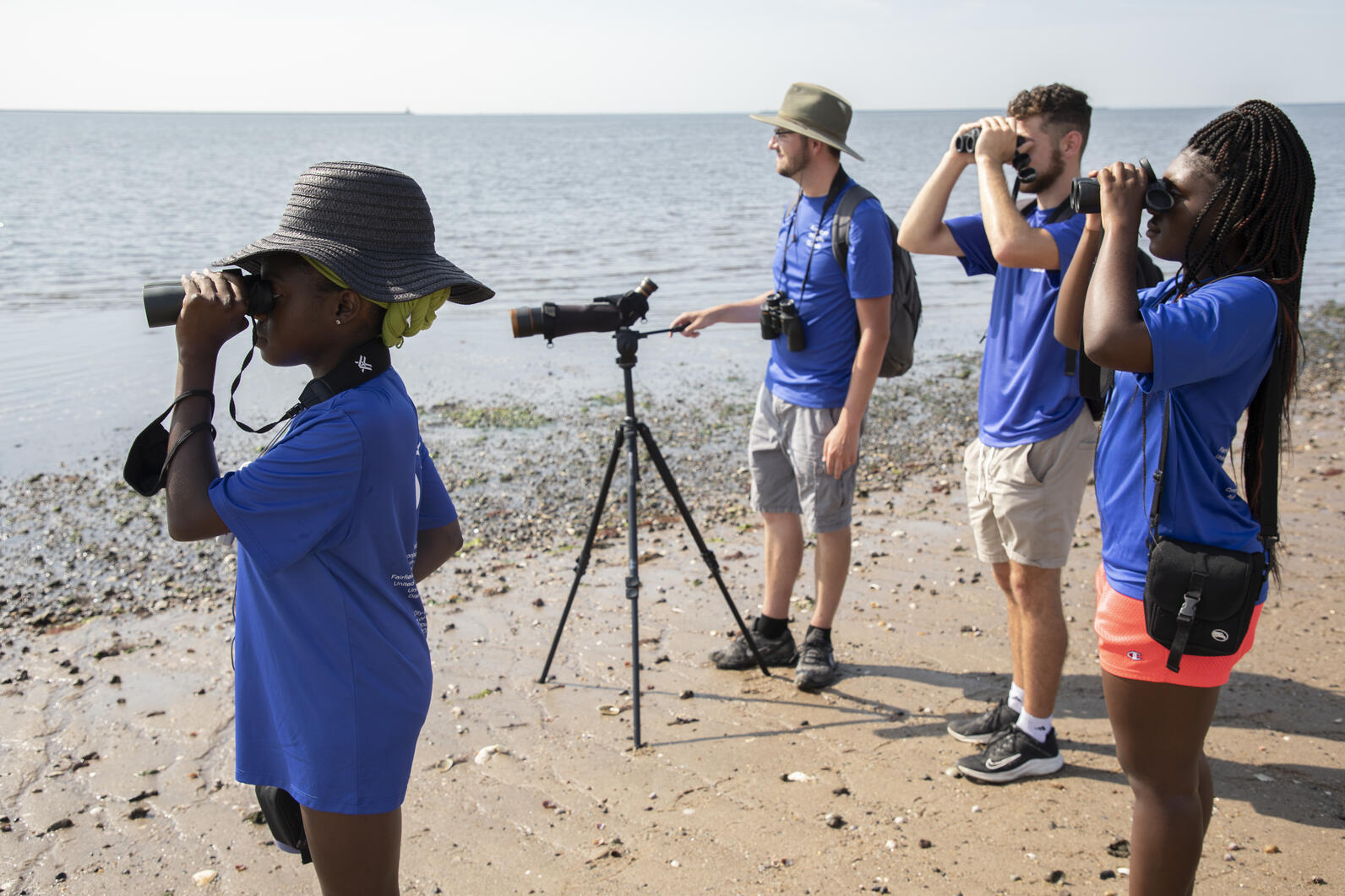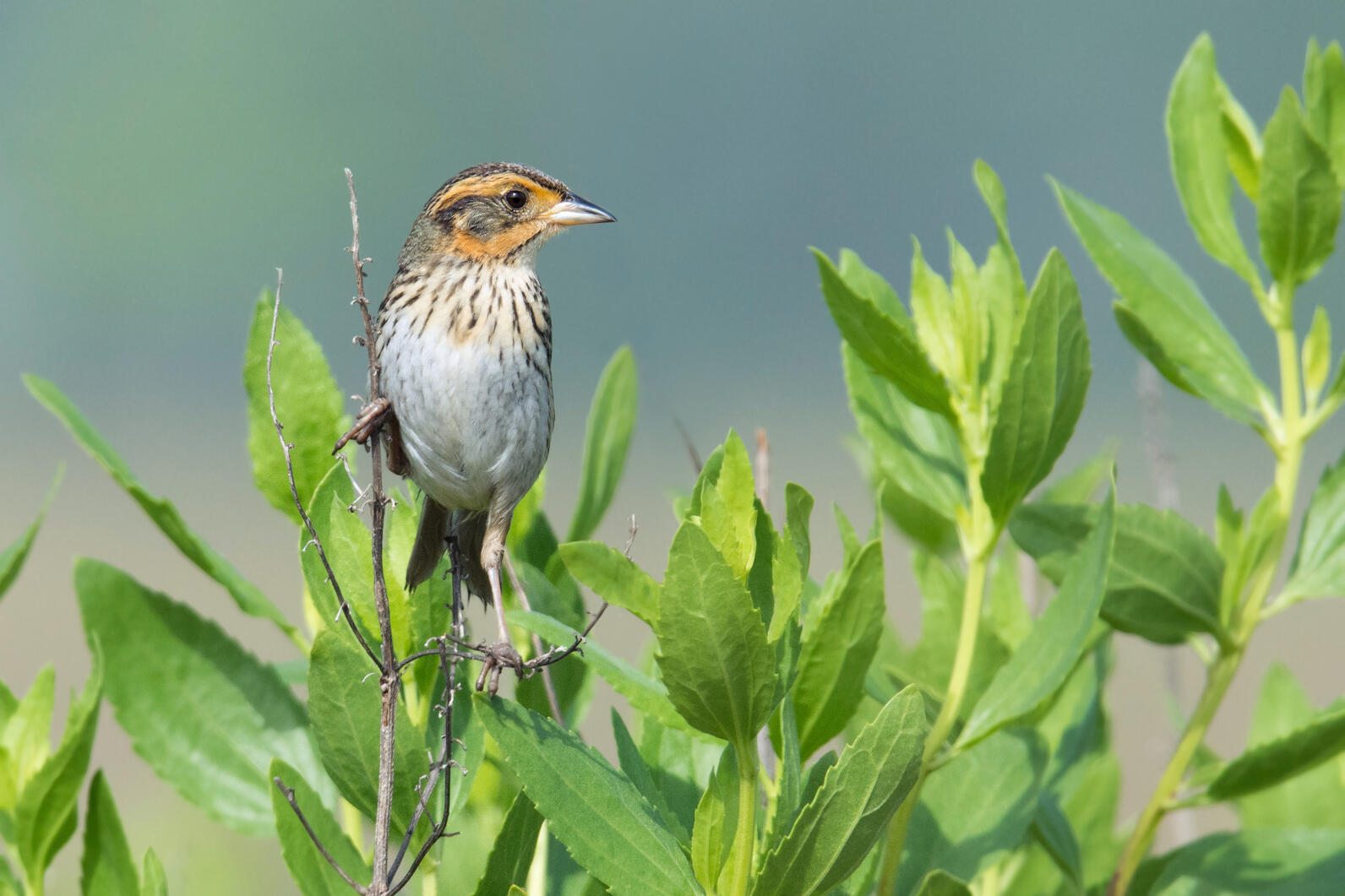Four projects that will benefit the coasts and forests of Connecticut and New York have received nearly $1M in funding from the National Fish and Wildlife Foundation (NFWF) and partners! These grants will allow us to expand some of our existing popular programs, hire local high school and college-aged interns, and start new restoration and conservation projects to protect birds and the places they need.
We’re so excited to get started on this essential work, and we look forward to sharing our accomplishments with our members!
Long Island Sound Futures Fund Grants
Thanks to this new funding from the Long Island Sound Futures Fund, we will be able to expand our work along the Long Island Sound and its watersheds in Connecticut and New York. These are among forty-one total new grants that were awarded by the National Fish and Wildlife Foundation (NFWF) in partnership with the Long Island Sound Study (LISS), the U.S. Environmental Protection Agency (EPA), and the U.S. Fish and Wildlife Service (USFWS).
$241,600 for outreach on the beach with our popular Be a Good Egg program in New York

Since 2014, Audubon has been leading the “Be a Good Egg” (BGE) campaign across the Long Island Sound, reaching more than 15,000 people in person with our Share the Shore messaging. The program works to change behaviors of beachgoers and minimize the impact of beach recreation activities on nesting shorebirds.
This grant will provide funding for us to continue to deliver our BGE program in the Long Island Sound watershed of New York. This project will increase support for coastal conservation and engage people in actions that help shorebirds thrive in these important coastal habitats.
To accomplish this, we will diversify and expand our program engagement by hiring three teen interns and youth volunteers to work alongside the Audubon team as a pathway to careers in conservation, reach new audiences by translating our key educational materials—including our Be a Good Egg Pledge—into Spanish and at least one other language, and expand our overall reach across Long Island by working with new program partners.
We will conduct this work at over 11 sites between the following 8 locations: Oyster Bay, Crab Meadow, Nissequogue River, Stony Brook Harbor, Hallock State Park and Mattituck State Tidal Wetlands, Plum Island, and Gull Island, as well as locations on the North Fork of Long Island
$250,000 to create ladders to careers in conservation for urban youth in Connecticut

Thanks to this generous grant, we will employ more youth from environmental justice communities in restoration and stewardship of coastal habitats and public outreach activities about coastal birds along Connecticut’s Long Island Sound shorelines. Through providing training and professional experiences to these youth, we will be working towards increasing the diversity of future conservation professionals.
During the two-year grant period, these youth will conduct stewardship and public outreach on a collective 780 acres at the following locations: Pleasure Beach in Bridgeport, Sandy Point in West Haven, and Great Meadows Marsh and Long Beach in Stratford. This work will benefit our priority species of Piping Plovers, Least Terns, and American Oystercatchers.
$435,200 to plan for tidal marsh restoration to protect birds (and people!) in and around Sunken Meadow State Park in New York

Sunken Meadow State Park is a park on the north shore of Long Island that contains many visitor amenities in addition to a 400-acre tidal marsh complex. Since the 1950s, human activity, among other factors, has severely degraded the marsh. Restoration work in recent years has helped to improve several sections of the marsh, but more work is necessary to create habitat for the over 50 state-rare species of plant and animal life that make use of this habitat type.
With this grant, we will develop designs to restore marsh at Sunken Meadow State Park, located in Kings Park, New York. This project will advance the restoration of high marsh habitat, which is essential for the iconic but declining Saltmarsh Sparrow, who relies on this habitat type to feed, breed, and find shelter. In addition, this restoration will buffer both the park and nearby communities from storms and sea level rise. This year’s funding will go to completing the designs, and acquiring the permits so that the project will be shovel-ready at the completion of this grant.
New England Forests and Rivers Fund Grants
Thanks to the New England Forests and Rivers Fund, we will be able to expand our work in the forests of New England in Connecticut and New York. The grant is one among eight total new grants awarded by NFWF in partnership with the Avangrid Foundation, the Zoetis Foundation, the USDA National Resources Conservation Service, the U.S. Forest Service, and the U.S. Fish and Wildlife Service.
$345,300 to engage more forest owners and industry stakeholders in habitat improvement in Connecticut and New York

Working with landowners, foresters, and industrial partners to manage forests habitat for birds has been part of Audubon New York's work for several years, with much success. With this grant, we will expand engagement with family forest owners and forest industry stakeholders in the St. Lawrence and Connecticut River watersheds to establish three new dynamic forest blocks. In addition to this work, we will continue to implement and advise best practices within our current forest blocks, and through this drive landscape-level habitat diversity. To make this amount of work possible, we will also continue to build our forester endorsement program through the training of professional foresters.
This project will restore 450 acres of early-successional habitat and 1,200 acres of late-successional habitat between New York, Connecticut, and Vermont, benefitting Golden-winged Warblers, Wood Thrush, Black-throated Blue Warblers, American Woodcock, and other species who rely on these habitats to breed and survive throughout the year.




